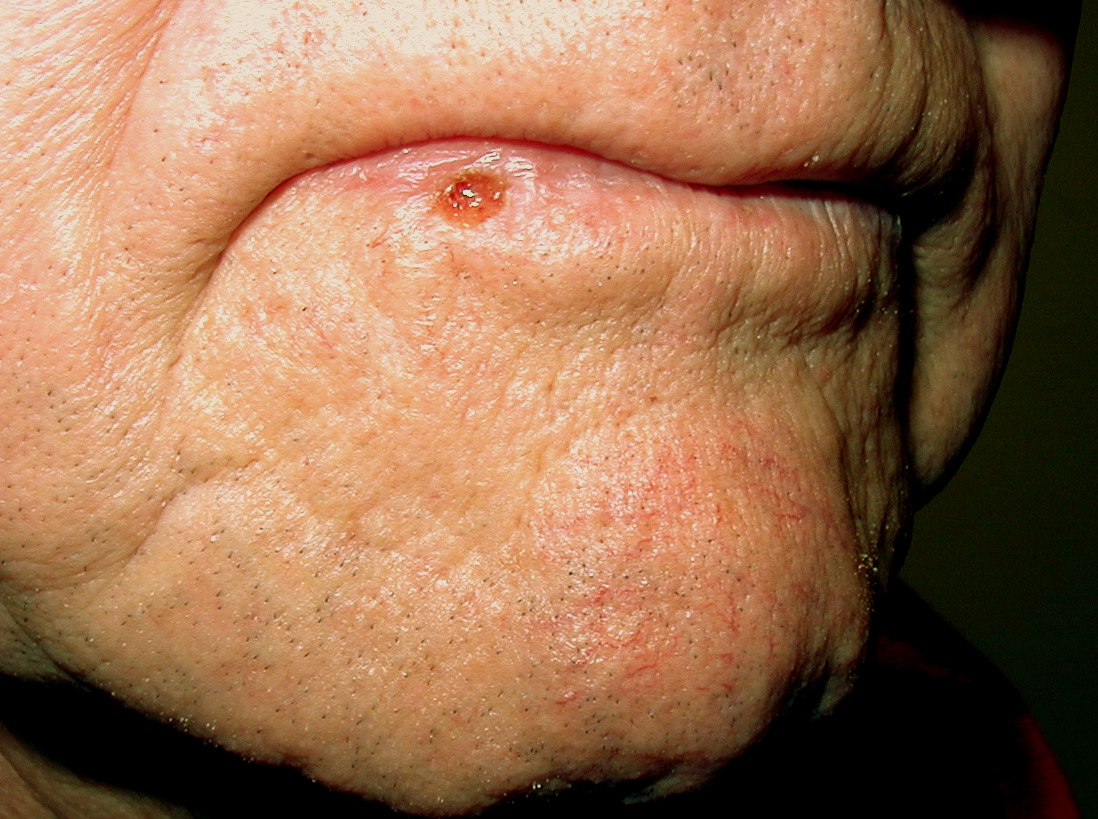What it is:
More than 250,000 new cases of squamous cell carcinoma (SCC) are diagnosed every year. SCC may occur on any part of the body but are most common in areas frequently exposed to the sun, such as the rim of the ear, lower lip, face, bald scalp, neck, hands, arms and legs. People with HIV and other immune deficiency diseases and those taking chemotherapy or immunosuppressive drugs are at higher risk of developing SCC as well as other cancers.
What it looks like:
- A scaly red patch with irregular borders that sometimes crusts or bleeds.
- Often look like a wart and sometimes appear as open sores with a raised border and a crusted surface over an elevated bumpy base.
- An elevated growth with a central indentation that occasionally bleeds.


How we treat it:
SCC may be treated by scraping away most of the affected area and then removing the remaining bad cells with a small hot cauterizing pen. This procedure is called curettage and electrodessication and is done with a local anesthetic. Surgical excision of SCC may also be necessary.
Call (520) 694-2873 for an appointment


